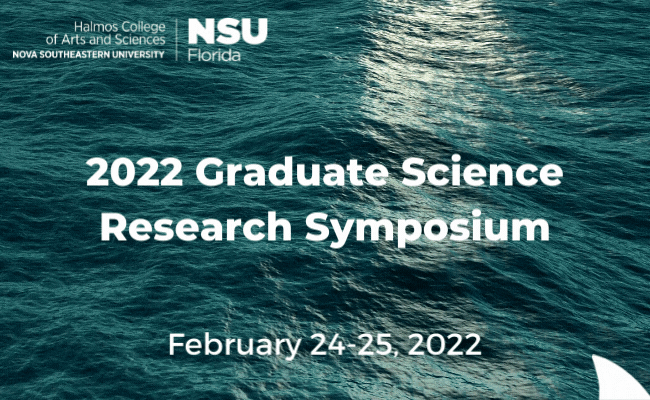Microbial impacts on loggerhead (Caretta caretta) and green (Chelonia mydas) sea turtle hatching success
Start
2-25-2022 1:00 PM
End
2-25-2022 1:15 PM
Type of Presentation
Oral Presentation
Abstract
All seven extant species of sea turtles are classified as threatened or endangered due to natural and anthropogenic impacts. Sea turtle conservation efforts are largely dedicated to ensuring healthy nesting activity. Hatching success of sea turtle eggs can be affected by several factors including the proliferation of pathogenic microbes. However, it is unclear as to which microbes have the most impact on hatching success and how they are transmitted into the eggs. The primary aims of this study characterized and compared the microbial communities (microbiomes) from the i) cloaca of nesting sea turtles; ii) sand within and surrounding the nests and iii) hatched and unhatched eggshells from two important species, the loggerhead (Caretta caretta) and green (Chelonia mydas) turtles. Samples were collected from nests in Fort Lauderdale and Hillsboro beaches in Broward County, Florida, where local nesting consisted of approximately 95% loggerhead, 5% green and 1% leatherback turtles (Dermochelys coriacea). Illumina MiSeq high throughput sequencing of 16S rRNA V4 region amplicons was performed on 27 cloaca, 54 sand, and 162 egg samples. Significant differences were identified between hatched and unhatched egg microbiomes with the differences caused predominately by the genus Pseudomonas, found in higher abundances in unhatched eggs (~20% relative abundance) than hatched eggs (~1% relative abundance). Although cloaca microbiomes were significantly different between turtle species, egg microbiomes were not found to be different between turtle species. Interestingly, significant differences were identified between beaches for both sand and egg samples. Mixed mode transmission is hypothesized as the likely mode of pathogen transmission into sea turtle eggs since neither maternal nor environmental transmission alone were identified as the primary source. This study provides new insights into the microbial communities associated with egg failure in sea turtle nests and unveiled information about the impacts the environment has on microbial introduction.
Microbial impacts on loggerhead (Caretta caretta) and green (Chelonia mydas) sea turtle hatching success
All seven extant species of sea turtles are classified as threatened or endangered due to natural and anthropogenic impacts. Sea turtle conservation efforts are largely dedicated to ensuring healthy nesting activity. Hatching success of sea turtle eggs can be affected by several factors including the proliferation of pathogenic microbes. However, it is unclear as to which microbes have the most impact on hatching success and how they are transmitted into the eggs. The primary aims of this study characterized and compared the microbial communities (microbiomes) from the i) cloaca of nesting sea turtles; ii) sand within and surrounding the nests and iii) hatched and unhatched eggshells from two important species, the loggerhead (Caretta caretta) and green (Chelonia mydas) turtles. Samples were collected from nests in Fort Lauderdale and Hillsboro beaches in Broward County, Florida, where local nesting consisted of approximately 95% loggerhead, 5% green and 1% leatherback turtles (Dermochelys coriacea). Illumina MiSeq high throughput sequencing of 16S rRNA V4 region amplicons was performed on 27 cloaca, 54 sand, and 162 egg samples. Significant differences were identified between hatched and unhatched egg microbiomes with the differences caused predominately by the genus Pseudomonas, found in higher abundances in unhatched eggs (~20% relative abundance) than hatched eggs (~1% relative abundance). Although cloaca microbiomes were significantly different between turtle species, egg microbiomes were not found to be different between turtle species. Interestingly, significant differences were identified between beaches for both sand and egg samples. Mixed mode transmission is hypothesized as the likely mode of pathogen transmission into sea turtle eggs since neither maternal nor environmental transmission alone were identified as the primary source. This study provides new insights into the microbial communities associated with egg failure in sea turtle nests and unveiled information about the impacts the environment has on microbial introduction.


